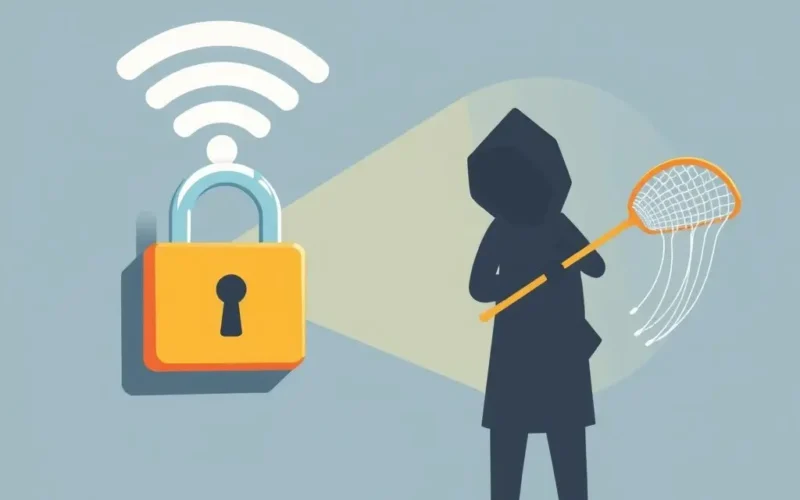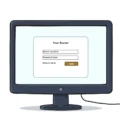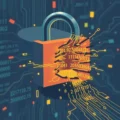Picture this: You’re at a coffee shop, desperately needing internet access. You spot a public Wi-Fi network, click connect, and breathe a sigh of relief when you see it requires a password. ‘Great,’ you think, ‘at least it’s safe!’
Sound familiar? It’s a common assumption, one that the presence of a password magically wraps your connection in an impenetrable shield. But here’s a little secret cybersecurity pros know: that password usually just opens the door to the building; it doesn’t lock the room from everyone else already inside. It’s a crucial distinction that could leave your sensitive data exposed.
We recently put together a quick rundown on this very topic in a YouTube Short. If you’re curious about how that simple password isn’t the be-all and end-all of public Wi-Fi security, give this a watch:
Table of Contents
Deconstructing the Myth: What That Password Actually Does (and Doesn’t)
When a public Wi-Fi network has a password, it’s typically using a security protocol like WPA2 or WPA3 (if you’re lucky, but older WPA or even WEP might still exist, which are highly insecure). The password serves one primary purpose: authentication.
Think of the password as a key. It verifies that you are an authorized user who is allowed to connect to the wireless router or access point. Once you’ve entered the correct password, your device is granted access to the network. You can now send and receive data to and from the internet via the router.
However, in many public Wi-Fi setups, especially those designed for ease of use in places like cafes, airports, or hotels, the network configuration might isolate connected devices from the internet (preventing Device A from talking directly to Device B), but it doesn’t necessarily encrypt the traffic *between* your device and the router in a way that prevents others *on the same network* from potentially seeing it. It also doesn’t prevent sophisticated attacks that can bypass this isolation.
In a truly secure private network, your data might be encrypted end-to-end within the network (using protocols like WPA3 Enterprise, for example). But on most simple public Wi-Fi networks using a single shared password (like WPA2-PSK), while the connection *to the access point* might be encrypted using a session key derived from the shared password, your traffic *on the network* isn’t inherently shielded from other users in all scenarios, particularly if the network is misconfigured or vulnerable to specific attack types.
The crucial point is: Anyone else with that same password is also inside the network. They are your digital neighbors. And without proper safeguards, some neighbors might be nosey, or worse.
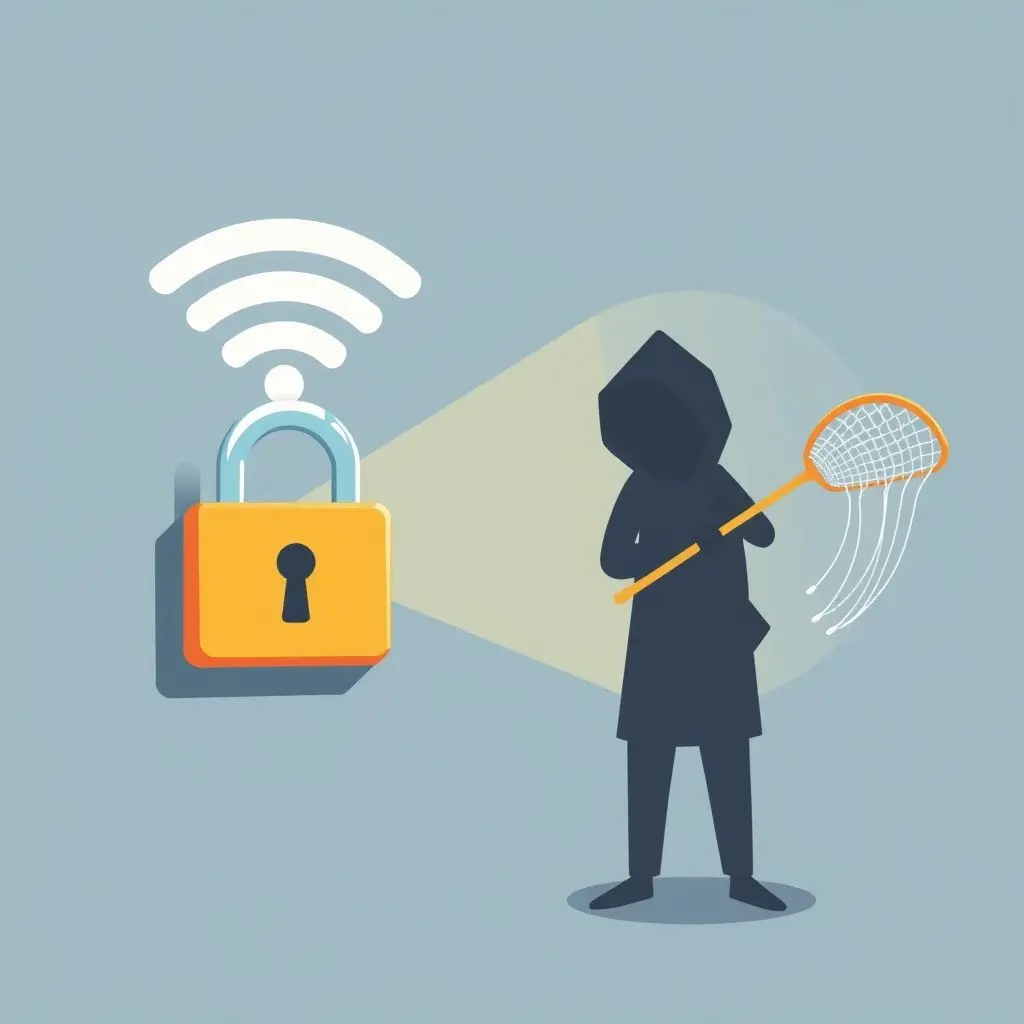
The Invisible Dangers Lurking on Public Wi-Fi
So, if the password isn’t a force field, what kind of trouble can you run into?
Data Interception (Packet Sniffing): This is perhaps the most common risk. Attackers on the same network can use readily available software tools (packet sniffers) to capture data packets travelling across the network. If you’re visiting websites that aren’t using HTTPS (that little padlock in your browser bar) or using apps that transmit data insecurely, your login credentials, personal messages, or other sensitive information could be exposed in plain text.
Man-in-the-Middle (MITM) Attacks: A more sophisticated threat. An attacker positions themselves between your device and the website or service you’re trying to reach. They can intercept your communications, read them, and even modify them before forwarding them on. They might trick your device into thinking their computer is the legitimate router or server you’re trying to connect to.
Rogue Access Points (Fake Hotspots): Attackers can set up their own Wi-Fi network with a name similar to the legitimate one (e.g., ‘Free Coffee Shop Wi-Fi’ instead of ‘CoffeeShop_FREE’). If you connect to this rogue network, all your traffic goes directly through the attacker’s control, making it trivially easy for them to steal your data, redirect you to fake login pages (phishing), or even inject malware onto your device.
Malware Distribution: While less common on legitimate networks, a compromised or rogue access point can be used to attempt to push malware onto connected devices, especially if your device has unpatched vulnerabilities.
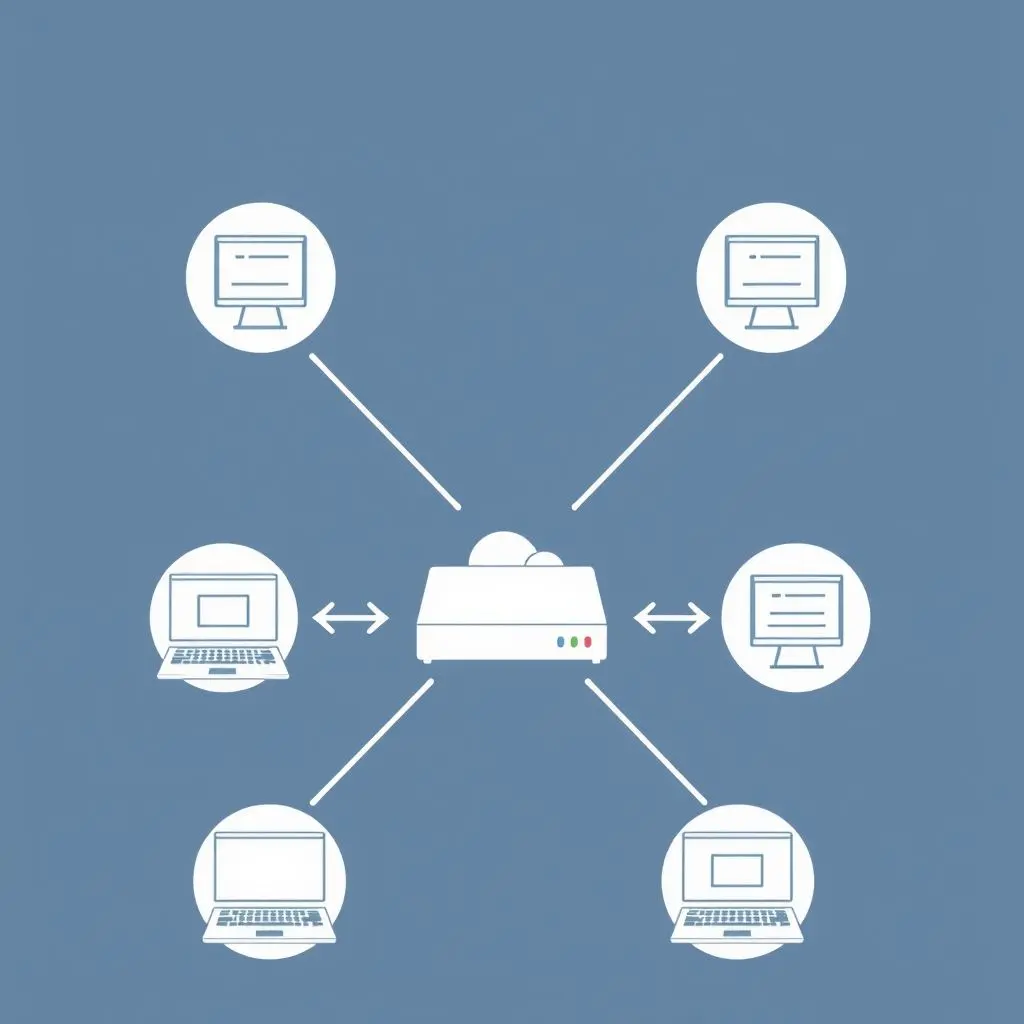
How Attackers Exploit Vulnerable Wi-Fi
Cybercriminals don’t need advanced hacking skills to exploit basic Wi-Fi vulnerabilities. Simple techniques and tools make it possible:
ARP Spoofing: A technique used in MITM attacks where an attacker sends fake ARP (Address Resolution Protocol) messages over a local network. This tricks devices into linking the attacker’s MAC address with the IP address of the router or another device on the network, causing traffic meant for the legitimate destination to be sent to the attacker instead.
DNS Spoofing: Attackers manipulate the DNS (Domain Name System) requests, which translate website names (like google.com) into IP addresses. They can trick your device into thinking a malicious IP address is the correct one for a legitimate website, redirecting you to a fake site designed to steal your login credentials.
Session Hijacking: If a connection to a website isn’t fully encrypted, an attacker can steal the session cookie that identifies you to the website, allowing them to take over your active session without needing your username and password.
Even with a password, if the network doesn’t properly isolate users or uses outdated protocols, these types of attacks can be successful.
Your Digital Shield: The Mighty VPN
So, if a password isn’t enough, what is the answer? Enter the Virtual Private Network, or VPN.
A VPN works by creating an encrypted tunnel between your device and a server operated by the VPN provider, typically located somewhere else in the world. When you connect to public Wi-Fi and then activate your VPN, all the data leaving your device is scrambled (encrypted) before it even reaches the public Wi-Fi router. It travels through the public network as unreadable gibberish.
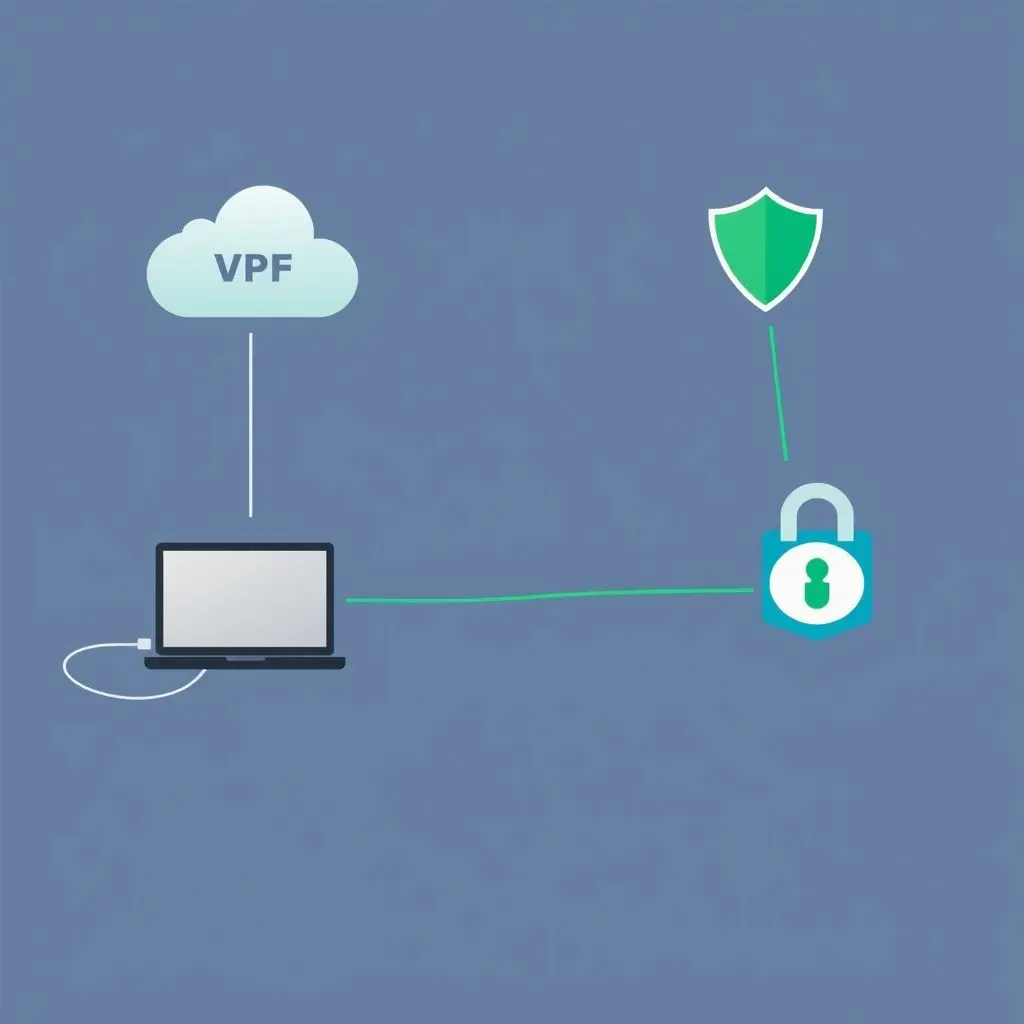
Only when the data arrives at the VPN server is it decrypted and sent on its way to its final destination (like a website or app). Similarly, data coming back is encrypted by the VPN server before travelling back through the public Wi-Fi network to your device, where your VPN client decrypts it.
Why is this effective? Because even if someone on the public Wi-Fi network intercepts your traffic, or the network itself is compromised, all they will see is encrypted data. They won’t be able to read your emails, steal your passwords, or see which websites you’re visiting.
Think of the public Wi-Fi password as the key to get into a public library. A VPN is like putting your sensitive documents inside a locked box before walking into the library. Anyone else in the library can see you carrying a box, but they can’t see or access what’s inside.
Beyond the VPN: Other Essential Safety Habits
While a VPN is your best friend on public Wi-Fi, a multi-layered approach to security is always wise:
Always Check for HTTPS: Before entering any sensitive information (like login details or payment info) on a website, ensure the address starts with
https://and there’s a padlock icon in the address bar. This means your connection to that specific website is encrypted, even if the local Wi-Fi isn’t fully secure (though HTTPS alone doesn’t protect against all MITM attacks on public Wi-Fi).Disable File Sharing: Make sure network discovery and file sharing are turned off on your device settings when connected to public networks. You don’t want strangers browsing your personal files.
Keep Software Updated: Ensure your operating system, web browsers, and security software are always up-to-date. Updates often patch security vulnerabilities that attackers could exploit.
Be Mindful of Sensitive Transactions: Whenever possible, avoid conducting highly sensitive activities like online banking or shopping on public Wi-Fi, even with a VPN, if you can wait until you’re on a trusted network.
Log Out: Always log out of accounts after you finish using them, rather than just closing the browser tab.
Burning Questions Answered: Public Wi-Fi Security FAQs
Q: If a public Wi-Fi network uses WPA3, is it completely safe?
A: WPA3 is a significant improvement over WPA2, offering stronger encryption and protection against certain types of attacks (like offline dictionary attacks on the password). However, even WPA3 on a public network doesn’t necessarily prevent all forms of local network snooping or sophisticated MITM attacks initiated by a compromised router or determined attacker on the network. A VPN still provides an essential layer of end-to-end encryption.
Q: What about captive portals where you have to log in or agree to terms? Are those safer?
A: Captive portals are primarily for access control and user management. They don’t inherently add extra encryption or security for your data traffic against other users on the network once you’re connected. The same risks of local snooping and MITM attacks can still apply.
Q: Can using a VPN make my internet connection slow?
A: Yes, a VPN can sometimes slow down your connection because your data has to travel to the VPN server and be encrypted/decrypted. The impact depends on the VPN provider’s server speeds, server location, your original connection speed, and the encryption protocols used. However, for most common tasks like browsing or email, the impact is often minimal and a worthwhile trade-off for security.
Q: Are free VPNs safe to use?
A: Be very cautious with free VPNs. Some free services may log your activity, sell your data, inject ads, or even contain malware. A reliable, paid VPN service with a strong privacy policy is generally recommended for true security and anonymity.
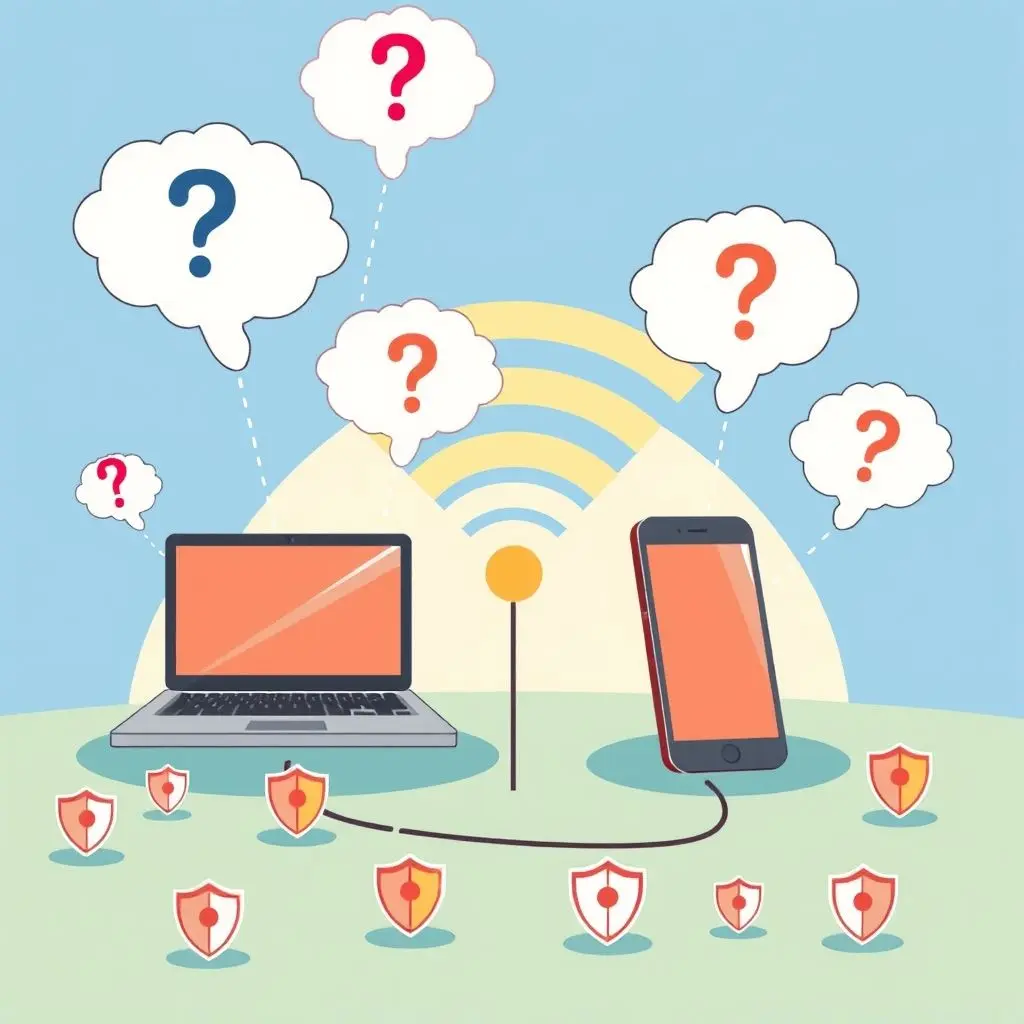
Putting It All Together
The takeaway is clear: relying solely on a password for safety on public Wi-Fi is a risky gamble. While it’s a basic layer of access control, it doesn’t protect your sensitive information from potential threats lurking within the network itself.
Your digital strategy on public Wi-Fi needs a superhero, and that’s where a reputable VPN comes in. By encrypting your connection from your device all the way to a secure server, you create a private bubble that shields your data from prying eyes, regardless of who else is sharing the network or how secure the network’s configuration is.
Stay informed, stay vigilant, and always prioritize your digital privacy, especially when connecting in public spaces. A little caution and the right tools go a long way in keeping your online life safe.
